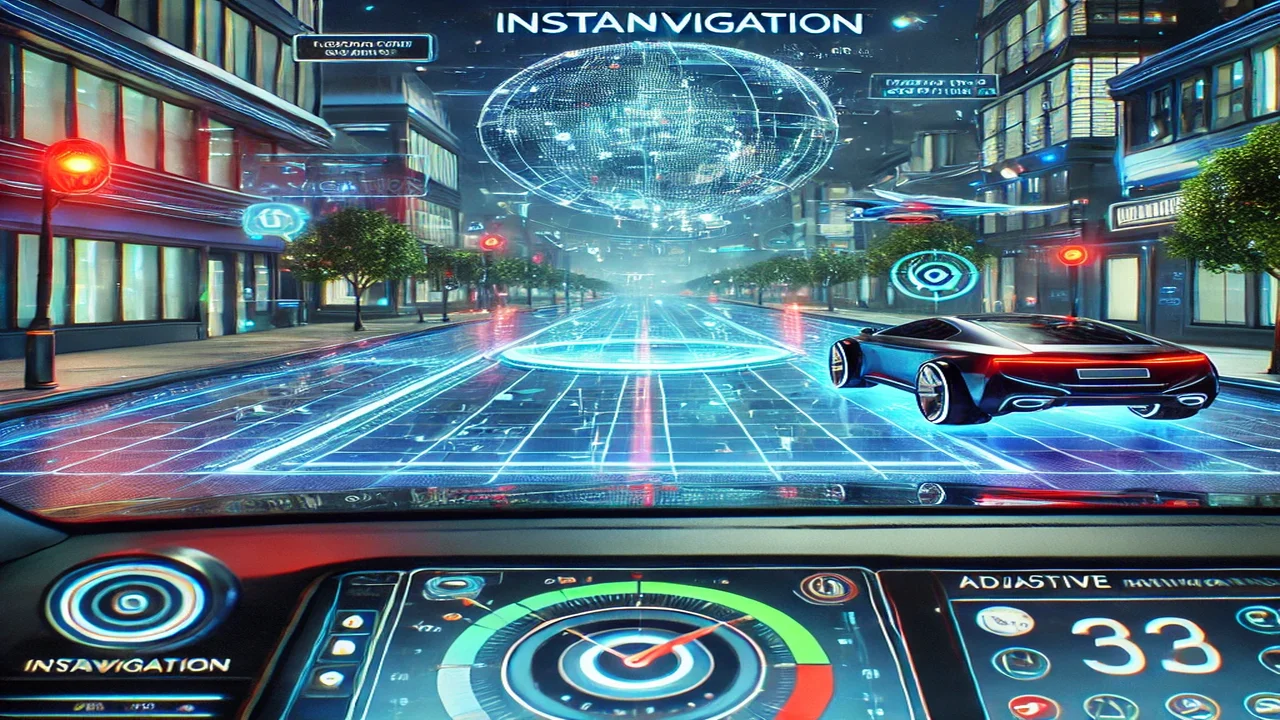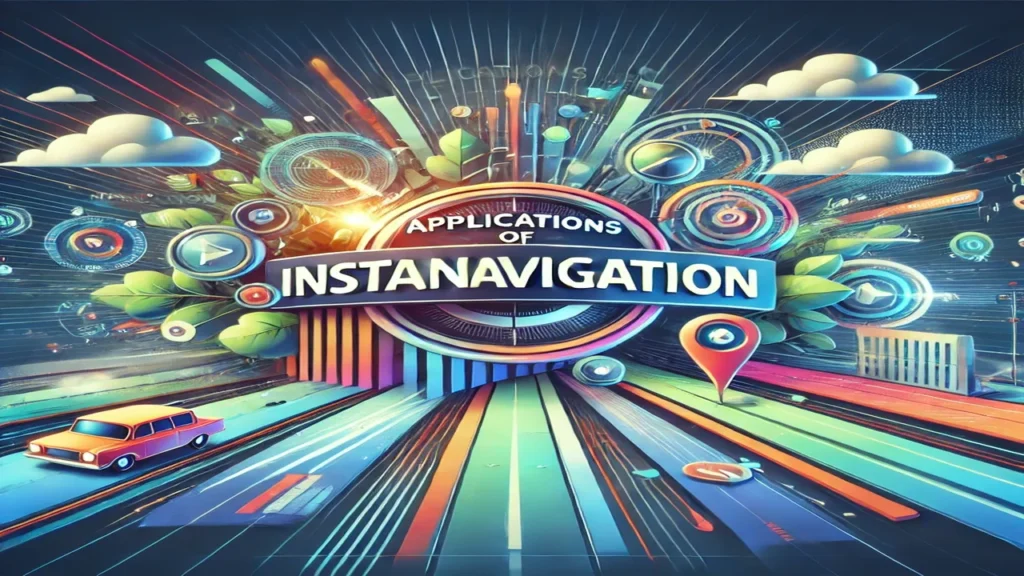Instanavigation: Revolutionizing the Way We Navigate

Introduction
Instanavigation, a state-of-the-art technology that is revolutionizing the way we navigate and travel. By providing smarter, more efficient, and adaptive real-time route guiding, Instanavigation surpasses conventional GPS systems. Learn all about Instanavigation, its uses, and how it’s going to revolutionize navigation in this in-depth essay.
What is Instanavigation?
To give consumers fast, accurate, and personalized travel assistance, Instanavigation combines a global positioning system (GPS), augmented reality (AR), and real-time data analytics. Instanavigation is different from other navigation systems since it constantly adjusts its directions depending on real-time variables like weather, road closures, and traffic, rather than using static maps and pre-set routes. Not only does this dynamic technology make travel more efficient, but it also makes it safer and uses less gasoline.
Who is Instanavigation For?
A wide variety of users, such as private drivers, companies with logistical demands, and emergency services, are intended to use Instanavigation. The opportunity to avoid delays and receive real-time traffic updates is a great perk for regular commuters. Instanavigation enhances route optimization, decreases fuel costs, and guarantees on-time delivery for enterprises, particularly those involved in fleet management and logistics. The adaptive navigation and accurate position monitoring it provides to emergency services are life-saving in extreme circumstances. In general, Instanavigation is a must-have for travelers that prioritize speed, security, and accuracy.
The Core Components of Instanavigation
Real-Time Route Guidance
The capacity to offer real-time route guidance is one of the main characteristics that differentiates Instanavigation from conventional systems. This means that the system is constantly updating your route according to the most recent data while you drive, walk, or cycle.
1. Dynamic Rerouting
The capacity to dynamically reroute visitors to the most efficient route to their destination is a key feature of Instanavigation. The technology is able to provide time-saving and congestion-reducing alternative routes by continually assessing traffic patterns, road closures, and other factors.
2. Instant Traffic Updates
Users may be informed about traffic conditions via Instanavigation, which provides fast updates. In densely populated places, where traffic conditions might change suddenly, this function is invaluable.
3. Precise Location Tracking
To offer accurate location tracking, Instanavigation makes use of cutting-edge GPS technology. This makes sure that the system can pinpoint your exact location, even in places where satellite reception is spotty, like crowded cities or underground tunnels.
4. Integration with Augmented Reality (AR)
Instanavigation stands notable due to its integration with augmented reality. It makes following directions easier and less distracting by superimposing navigation information over the real-world view through your smartphone or augmented reality glasses.
5. Real-Time Data Analytics
One of Instanavigation’s strongest points is its real-time processing of massive amounts of data. Factors such as weather, road risks, user preferences, and location are all part of this. Using this data, the system’s analytics engine, which is driven by AI, optimizes route direction continuously.
Applications of Instanavigation

Optimized Fleet Management
Instanavigation has a lot to offer enterprises like logistics firms that depend on transportation.
1. Improved Delivery Times
More efficient deliveries are the result of Instanavigation’s real-time route optimization capabilities. Companies can increase customer satisfaction by delivering products on schedule by avoiding traffic and taking the shortest routes.
2. Fuel Consumption Reduction
Less fuel use is another benefit of efficient route planning. Businesses can reduce fuel expenses with the help of Instanavigation by choosing the most direct routes and limiting idle time in traffic. This can have a big influence on the bottom line.
3. Enhanced Fleet Coordination
Instanavigation offers solutions for improved coordination for businesses overseeing big fleets. Vehicles’ real-time locations can be tracked by fleet managers, who can then dynamically allocate routes and react swiftly to unforeseen events like road closures or breakdowns.
4. Predictive Maintenance
Auto repair is another area where Instanavigation’s data analytics might be useful. The technology can anticipate when maintenance is required by studying driving patterns and vehicle usage, which helps to avoid failures and save downtime.
5. Compliance and Reporting
Additionally, instantanavigation helps in meeting regulatory standards. For the purpose of automatically producing reports that guarantee conformity with industry norms and rules, it can monitor driving hours, speed limits, and other variables.
Emergency Navigation Solutions
Instanavigation is a lifesaver in high-pressure scenarios when every second matters.
1. Accurate Location Data
In order to get to people in need fast, emergency services depend on precise location data. Even in densely populated areas, first responders can navigate to the site quickly because to Instanavigation’s accurate GPS tracking.
2. Adaptive Route Guidance
In times of crisis, traffic conditions can evolve in an instant. Faster response times are guaranteed by emergency vehicles using Instanavigation’s adaptive route advice to avoid delays caused by road closures, impediments, or traffic.
3. Integration with Emergency Networks
By integrating with emergency communication networks, instantanavigation can provide real-time updates on incident locations and road conditions. Because of this, emergency services can work together better and react faster.
4. Specialized Routes for Emergency Vehicles
Additionally, the system has the capability to generate emergency vehicle-specific routes. To make sure that first responders don’t have any extra delays, these routes consider things like vehicle size, weight, and access to restricted regions.
5. Life-Saving Potential
With its precise location tracking, adaptive direction, and integration of real-time data, Instanavigation is a technology that can save lives in emergency situations. Instanavigation makes sure that aid gets to where it’s needed most, whether it’s an ambulance traversing a congested city or a fire truck discovering the quickest way to a distant place.
Challenges and Concerns

Over-Reliance on Digital Tools
Problems with becoming too dependent on technology have been raised, despite the obvious advantages of Instanavigation.
1. Erosion of Natural Navigation Skills
The decline of people’s innate navigational abilities is a real possibility if Instanavigation becomes more popular. As a result, users may grow accustomed to their environments and lose the ability to navigate independently with the help of digital tools.
2. Data Privacy Concerns
Massive volumes of data, including behavioural and location-based information, are essential to instantaneous navigation. The possible exploitation of personal information and data privacy are issues that this brings up.
3. Dependency on Technology
The danger of becoming overly reliant on technology is another concern. Users could have trouble navigating the system if it crashes as a result of hacks or other technical problems.
4. High Costs for Businesses
For smaller companies in particular, the initial investment and ongoing maintenance of an Instanavigation system can be prohibitive. Some people might not be able to afford the software, hardware, and data services necessary.
5. Ethical Considerations
There are moral questions about using Instanavigation for mission-critical applications and emergency services. How, for instance, should the system prioritize various users in the event of a catastrophe? As technology advances, these intricate problems will inevitably arise.
Comparing Instanavigation with Traditional GPS Systems
1. Accuracy and Precision
While standard GPS devices can get you where you’re going and help you plan your route, Instanavigation is light years ahead of the competition. More accurate and dependable guidance is offered by Instanavigation through the use of real-time data and powerful analytics.
2. Adaptability to Changing Conditions
Traditional GPS has the major drawback of not being able to adjust to new circumstances. However, instantanavigation constantly updates routes using the most up-to-date data, so users are never off the most efficient path.
3. Integration with Modern Technologies
Unlike older GPS systems, Instanavigation incorporates AR, AI, and other cutting-edge technologies. Because of these integrations, navigation is now more user-friendly, tailored, and adaptable to actual circumstances.
4. User Experience
Instanavigation also does a great job with the user experience. Instanavigation provides an interesting and user-friendly experience compared to older systems, with features including voice commands, real-time updates, and augmented reality overlays.
5. Cost-Effectiveness
Despite the greater upfront expenses, many customers find that Instanavigation is a cost-effective solution because to its long-term benefits of increased safety, fuel savings, and efficiency. Though more affordable initially, conventional GPS devices might not be worth it after all.
Must Read: Google SEO Xiaoyan: Elevating Digital Presence with Expert Strategies
Frequently Asked Questions
What is Instanavigation?
Instanavigation is an advanced navigation technology that provides real-time, adaptive route guidance by integrating GPS, augmented reality, and data analytics.
How does Instanavigation differ from traditional GPS systems?
Unlike traditional GPS, Instanavigation continuously updates routes based on real-time traffic, road conditions, and other dynamic factors, ensuring more efficient and accurate navigation.
Can Instanavigation be used for fleet management?
Yes, Instanavigation is highly beneficial for fleet management, optimizing routes, reducing fuel consumption, and improving delivery times.
Is Instanavigation useful in emergencies?
Absolutely, Instanavigation provides precise location tracking and adaptive route guidance, which can be critical for emergency services to reach their destinations quickly.
Are there any privacy concerns with using Instanavigation?
While Instanavigation offers many benefits, it does raise concerns about data privacy, as it relies on extensive location and usage data for its functionality.
Conclusion
There has been a tremendous leap forward in navigational technology with the advent of instantavigation. It provides an unprecedented degree of efficiency and security by merging adaptive route assistance, accurate location tracking, and real-time data analytics. Instanavigation gives you the tools to confidently navigate the modern world, whether you’re an individual trying to escape traffic, a corporation trying to optimize logistics, or an emergency service. We may expect this technology to revolutionize our mobility and interactions with the world as it advances and becomes more embedded in our everyday lives.

Stella Brooks is the creative mind behind AllVyvymanga.com, where she explores the rich tapestry of manga culture and its impact on modern entertainment. Her blog delves into the intricate storytelling and artistic innovations of manga, offering readers a blend of cultural insights and the latest trends. Stella’s work shines a light on how traditional narratives and contemporary themes intersect in this dynamic art form.


